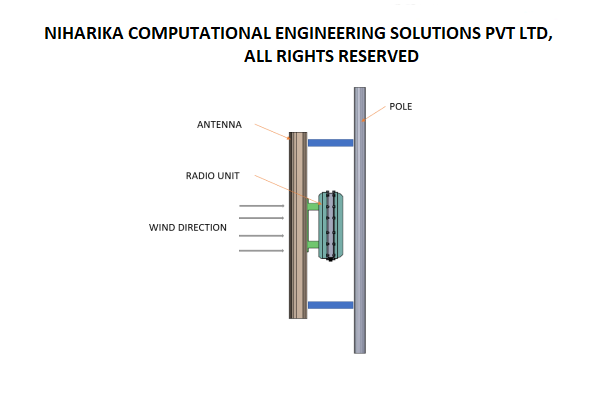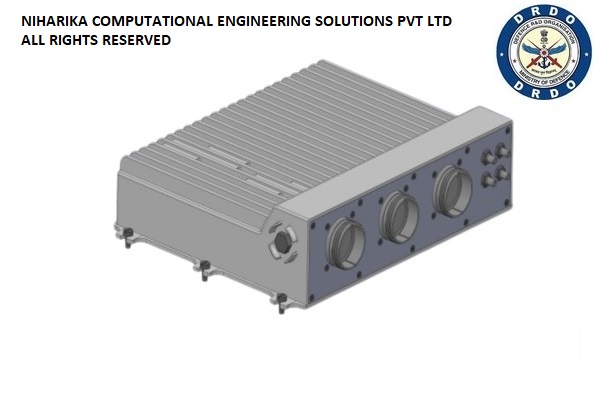OVERVIEW OF THE PROJECT
RVBF is an Inert gas-circulated, closed-loop Integrated thermal system with operating temperatures up to 1500 Deg Celsius. The Integrated thermal loop consists of a heat treatment chamber, a centrifugal blower for gas circulation, Shell and Tube Heat exchanger to achieve gas cooling, and an Electromagnetic Induction heater to reach a higher operating temperature. Controlled cooling of the job is essential to achieve the desired metallurgical structure after heat treatment. Niharika Computational Engineering Solutions Pvt Ltd (NCES) has collaborated with the client and analyzed the overall thermal performance of RVBF. We conducted transient Computational Fluid Dynamics (CFD) analysis to analyze the cooling of the job during the cooling cycle. Our CFD analysis process is validated with the help of experimental data obtained from the existing RVBF unit, which is of slightly lower capacity.

The Rotary Vacuum Brazing Furnace (RVBF) is a high-temperature thermal system utilized by aerospace manufacturers for brazing and various metallurgical processes within a chemically inert environment. This closed-loop RVBF features a heat treatment chamber that includes induction heaters, a shell and tube heat exchanger, and a blower to facilitate the circulation of inert gas. The purpose of performing CFD analysis is to assess the effectiveness of the induction heater design and evaluate the performance of the cooling systems in use.
The CFD mesh is composed of 20 million Poly hex core elements that meet the necessary quality metrics in accordance with CFD best practices. Fine elements are utilized in areas with high gradients, such as around the blower blades and heaters.
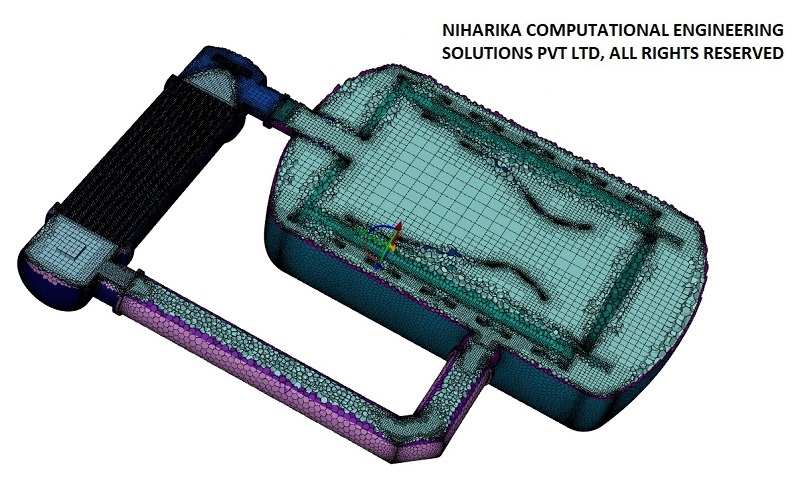
Both steady-state and transient CFD analyses have been performed on the RVBF unit to thoroughly evaluate the various assumptions made during the design process.
The steady-state analysis confirmed that the induction heater design, along with integrated cooling systems such as the shell and tube heat exchanger and blower, is adequate. Meanwhile, the transient CFD analysis provided our client with the assurance that specific operational requirements, particularly the time-dependent cooling of the job following a hot soak, are met.
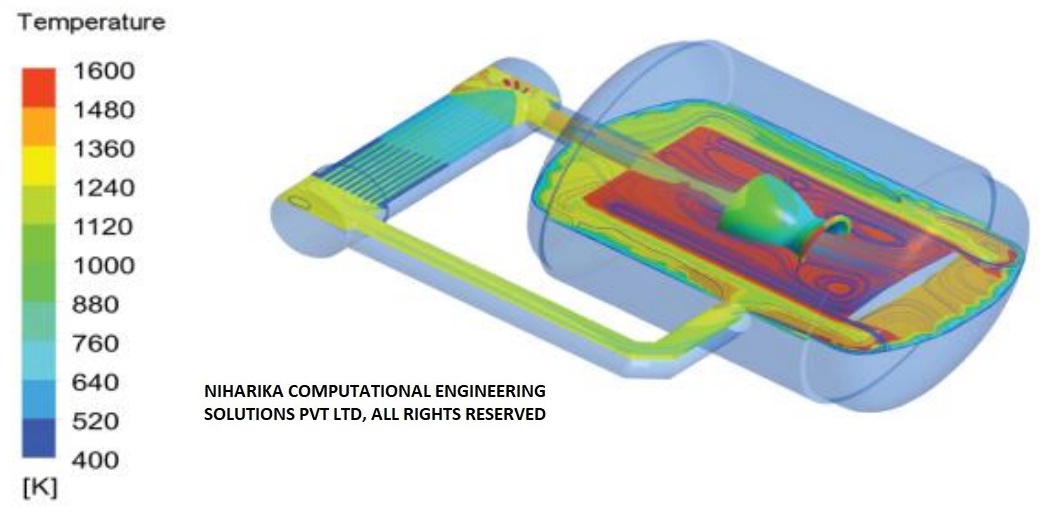
We Got More
Go through All Our Case Studies

Thermal and structural analysis of Chemical Vapor Infiltration and Chemical Vapor Deposition furnace
CVI and CVD is a thermo-vacuum chamber operating up to 2500 Degree Celsius. CVI-CVD furnace is mainly to mold high-temperature sustainable composites used in supersonic missiles. This Thermo-vacuum facility is commissioned at DRDL- Hyderabad, the Defence Research and Development Organization (DRDO) propulsion complex, Ministry of Defence, Government of India. The electromagnetic Induction heater is used to generate higher operating temperatures of the order of 2500 Degree Celsius. Niharika Computational Engineering Solutions Pvt Ltd (NCES) has collaborated with the client and conducted Computational Fluid Dynamics (CFD) analysis to assess the thermal performance of the furnace. We also conducted structural analysis (FEA) to predict the thermal expansion of the plunger unit. Read MoreCFD analysis of Digital aircraft engine controller-FADEC
FADEC is a computer-managed aircraft ignition and engine control system used in modern commercial and military aircraft to control all aspects of engine performance digitally. Our client is a Government of India-approved Aerospace and Defense R&D unit. Read More
FEM analysis for Telemetry Flight Test Instrumentation
PCAMI-1000 is an Airborne ruggedized Instrumentation System that handles excitation, attenuation, signal conditioning, data, embedded video and audio acquisition, encoding, operating numerous buses such as MIL 1553 and Arinc, and onboard data recording and data transmission with chassis of varied slot capacities such as 3, 6, 9 and 13 slots. Read More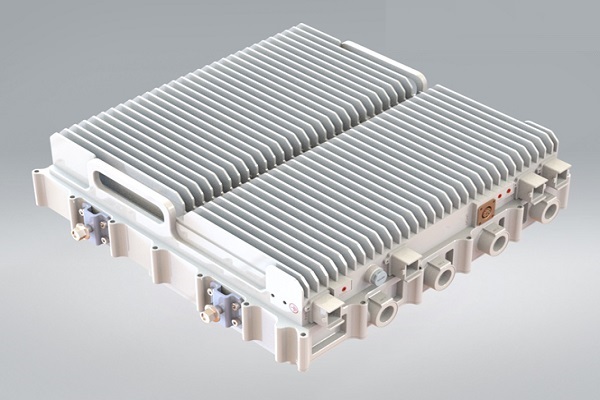
CFD analysis of Multi Band Remote Radio Unit
The advent of 5G technology has brought about unprecedented advancements in wireless communications, enabling faster speeds, lower latency, and increased capacity. These advancements are associated with higher power consumption and increased heat generation in the 5G Remote Radio units.Increasing data rates and network densification require radio units to process larger volumes of data, leading to higher power consumption and heat generation. Environmental factors such as ambient temperature, humidity, and exposure to direct sunlight also impact the thermal aspects of the radio units. Read More